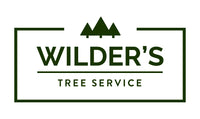Proper tree fertilization is key to promoting healthy growth, strong root systems, and vibrant foliage. However, understanding the secrets of tree fertilization can sometimes feel like a daunting task. In this blog post, Wilder's Tree Service unveils the essential information on when, what, and how to fertilize your trees effectively. By following these guidelines, you can provide your trees with the nutrients they need to thrive and enhance the beauty of your landscape.
-
When to Fertilize: Timing is crucial when it comes to tree fertilization. The ideal time to fertilize trees is during their active growth periods. For most deciduous trees, this is in early spring before the leaves fully emerge. Evergreen trees can be fertilized in early spring or early fall. Avoid fertilizing during periods of extreme heat or drought, as the roots may be stressed and unable to efficiently absorb nutrients.
-
Understanding Nutrient Needs: Before fertilizing your trees, it's important to understand their specific nutrient requirements. Conduct a soil test to determine the nutrient deficiencies or excesses in the soil. This information will guide you in selecting the appropriate fertilizer and determining the correct nutrient ratios for your trees. Consult with a professional arborist or horticulturist for expert guidance on soil testing and nutrient analysis.
-
Choosing the Right Fertilizer: There are various types of fertilizers available, each with different nutrient compositions. Selecting the right fertilizer for your trees depends on their specific needs and the results of the soil test. Look for a slow-release or controlled-release fertilizer, which provides a steady supply of nutrients over an extended period. Choose a fertilizer formulated for trees and avoid using lawn fertilizers, as they may contain excessive amounts of nitrogen, which can harm tree roots.
-
Application Techniques: Applying fertilizer correctly is essential to ensure optimal nutrient uptake by the trees. Follow these guidelines:
- Spread evenly: Distribute the fertilizer evenly around the tree's drip line, which is the outermost edge of the canopy.
- Avoid contact with trunk: Keep the fertilizer at least 6 inches away from the tree trunk to prevent root damage and potential burns.
- Incorporate into the soil: After spreading the fertilizer, lightly rake it into the topsoil or water it in to help the nutrients penetrate the root zone.
- Water thoroughly: After fertilizing, water the area deeply to aid in nutrient absorption and prevent nutrient runoff.
- Use the right quantity: If using commercial fertilizer, check the package for the right application amounts. Too much can burn the roots and pollute waterways.
-
Consider Organic Alternatives: For those looking for organic options, consider using compost, well-rotted manure, or organic fertilizers. These natural amendments improve soil structure, enhance microbial activity, and provide a slow release of nutrients. Organic fertilizers also contribute to long-term soil health and sustainability.
-
Regular Monitoring and Adjustments: Tree fertilization is not a one-time task. Regular monitoring of tree health, growth, and foliage color can help you assess the effectiveness of your fertilization program. Adjust fertilizer applications based on the tree's response and any changes in soil nutrient levels indicated by subsequent soil tests.
Proper tree fertilization is essential for maintaining healthy, vigorous trees that beautify your landscape. By understanding the secrets of when, what, and how to fertilize your trees, you can provide them with the nutrients they need to thrive. Remember to consider timing, nutrient needs, fertilizer selection, application techniques, and the option of organic alternatives.
Consult with Wilder's Tree Service for expert advice and assistance in creating a customized tree fertilization plan that will enhance the health and vitality of your trees for years to come.

